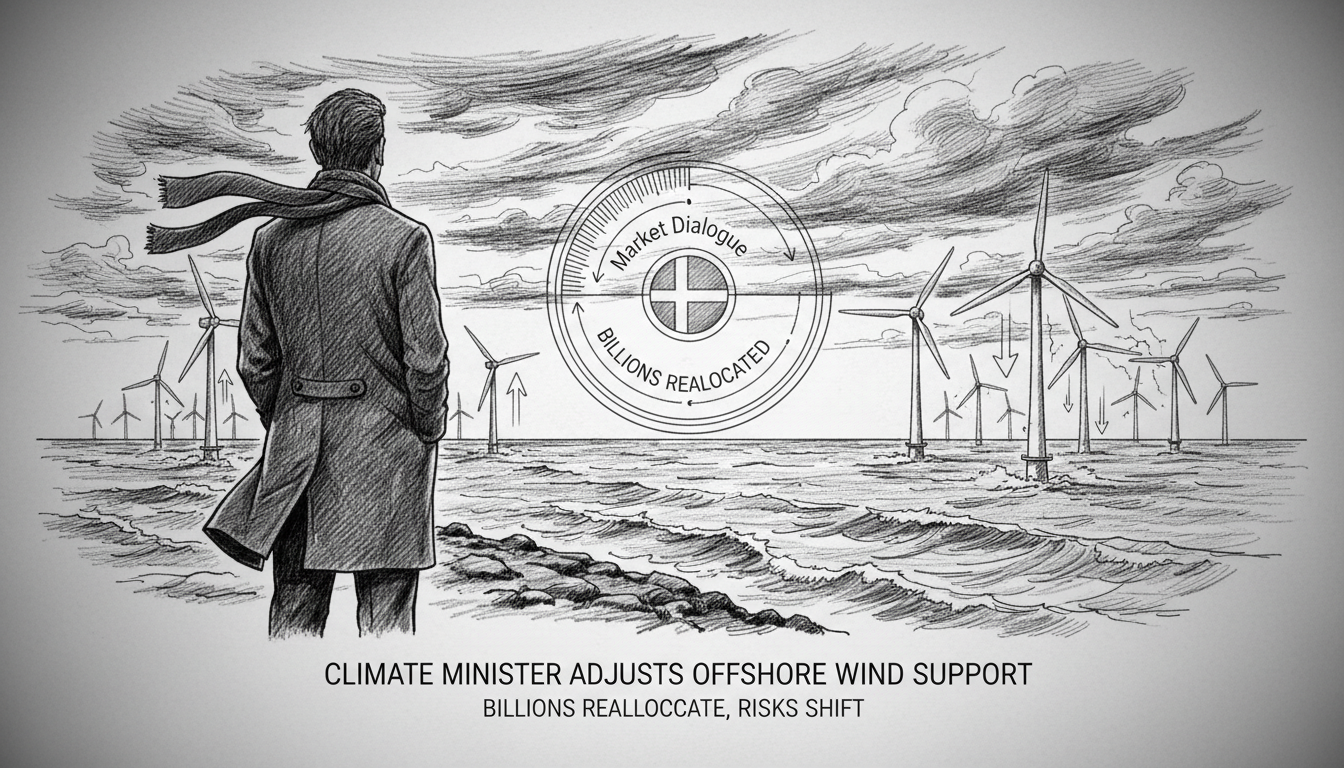Denmark's Climate Minister has announced major changes to government support for three upcoming offshore wind farms. The decision follows extensive dialogue with market players about the country's renewable energy expansion. The total support ceiling remains fixed at 55.2 billion kroner, but the distribution between projects has shifted dramatically.
Support for the Nordsøen Midt project increases from 11.4 billion to 19.6 billion kroner. Meanwhile, funding for Nordsøen Syd drops sharply from 16.2 billion to just 8.2 billion kroner. This redistribution significantly alters the prospects for both developments.
The Climate Minister acknowledged the consequences of this reallocation. He stated that increasing one project's likelihood within the same overall budget necessarily reduces chances for the other. Officials examined this trade-off carefully but emphasize this doesn't constitute cancellation of the southern project.
This adjustment represents the latest chapter in Denmark's complex offshore wind journey. In May, a broad parliamentary agreement revived three wind farm tenders after the initial bidding round attracted no offers. Politicians decided these three projects with combined capacity of three gigawatts would proceed with potential state support up to 55.2 billion kroner.
The first six-gigawatt tender proceeded without government subsidies and failed to attract bidders. This market response prompted the current support mechanism and subsequent adjustments. Denmark's approach reflects the challenging balance between market forces and climate ambitions.
International observers watch Denmark closely as a renewable energy pioneer. The country aims to reduce carbon emissions dramatically while maintaining economic competitiveness. These wind farm adjustments demonstrate how even established green leaders must adapt their strategies when market realities intervene.
What does this mean for Denmark's climate targets? The government clearly prioritizes getting projects built over perfect subsidy distribution. By concentrating resources on the most viable project, they increase the likelihood of actual construction rather than theoretical capacity.
The minister's straightforward admission about risk trade-offs shows political maturity. Many governments would obscure such difficult choices, but Danish officials present them as necessary compromises in the green transition. This transparency helps manage expectations among citizens and investors alike.
Denmark's offshore wind sector development offers lessons for other nations. The transition from unsubsidized projects to supported ones, followed by strategic adjustments, shows the iterative nature of renewable energy policy. Success requires flexibility and responsiveness to market signals while maintaining commitment to long-term climate goals.

